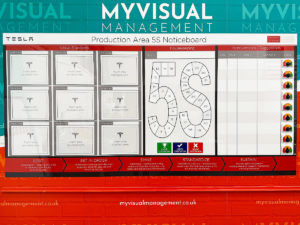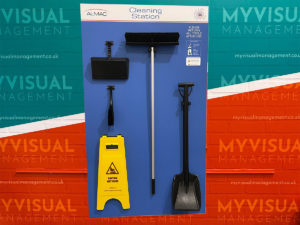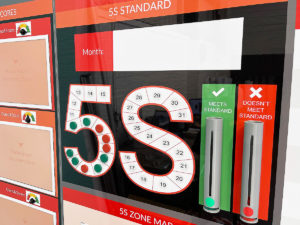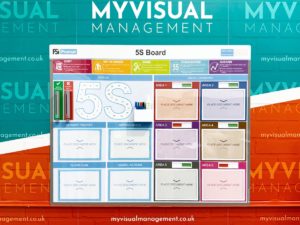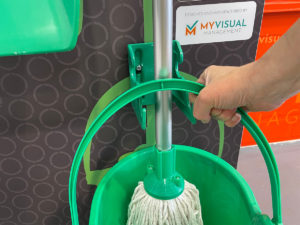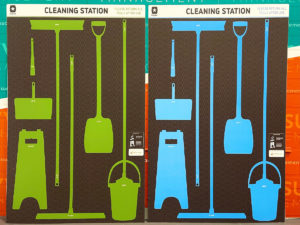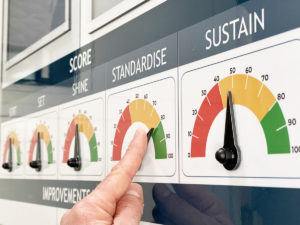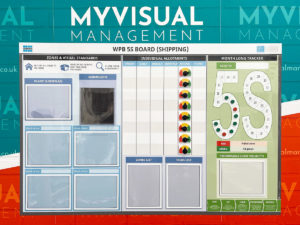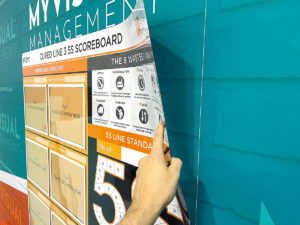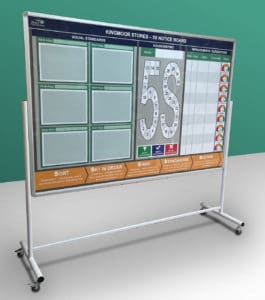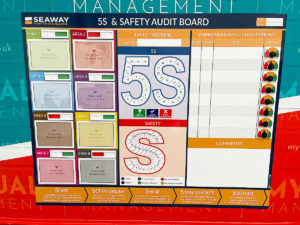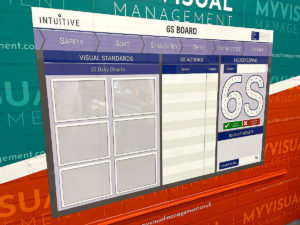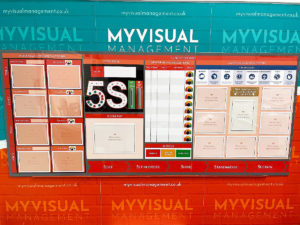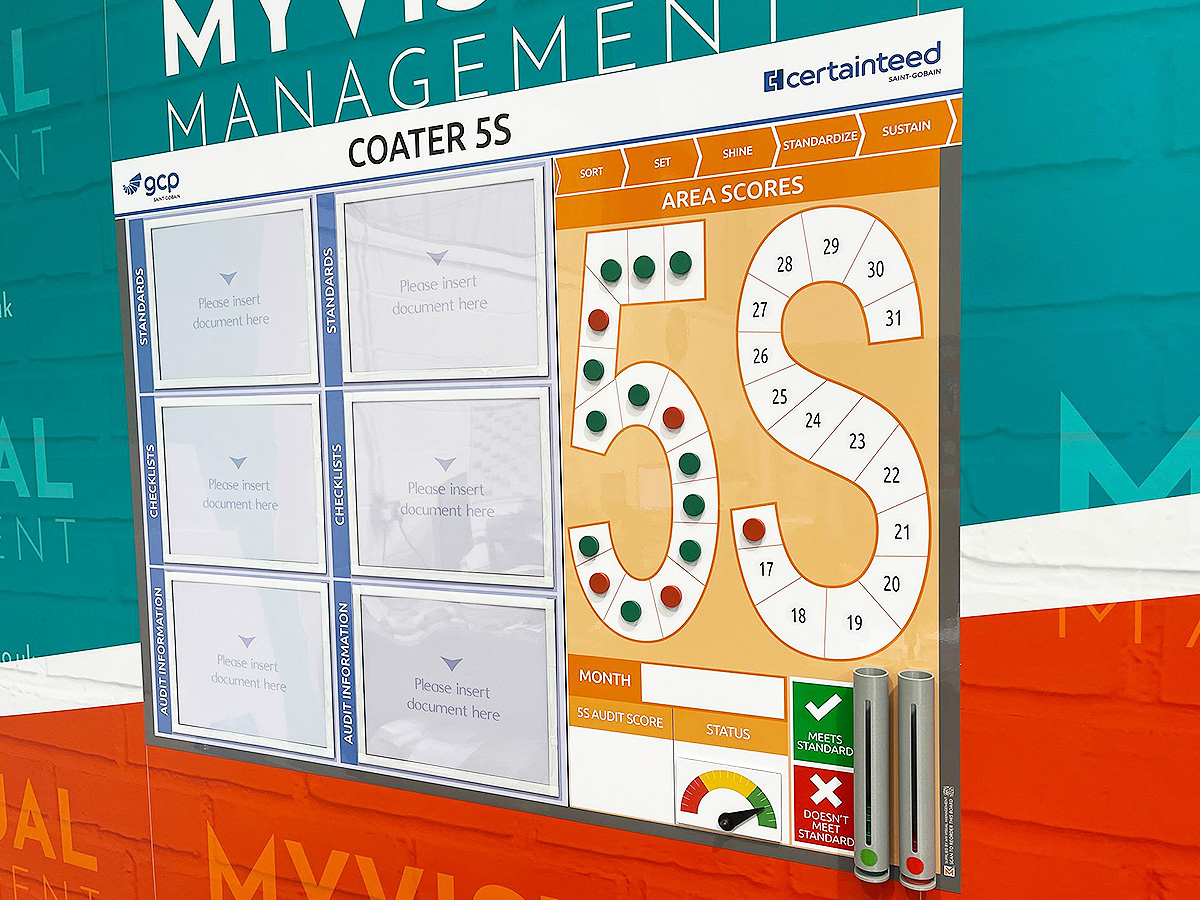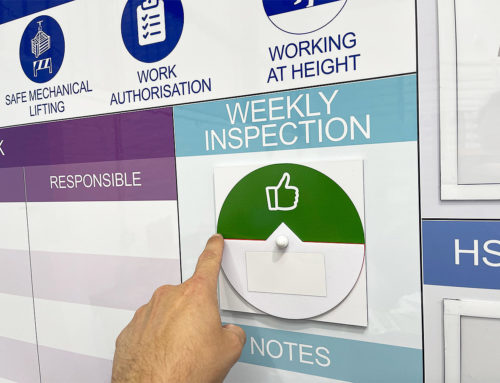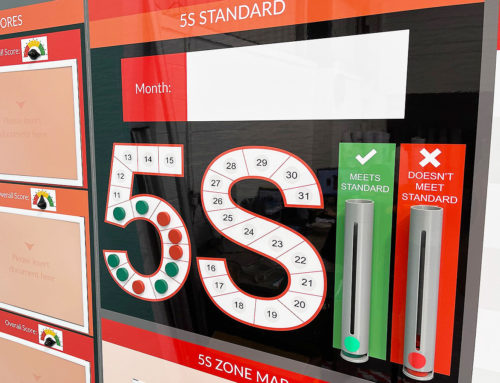The Science of 5S: What Research Says About Making Standards Visible (2024–2025)
Making Continuous Improvement Visual.
In 2025, 5S remains one of the most widely adopted Lean foundations across manufacturing, logistics, healthcare and service environments. But while many organisations implement 5S, far fewer truly understand the science behind it — specifically, why visibility matters, and how current research (2024–2025) reinforces the value of clear visual standards.
This article brings together the latest evidence and practical insights to help organisations design 5S systems that actually work — from tool organisation and point-of-use layouts to 5S boards and cleaning stations.
1. Why 5S Still Matters in 2025
Recent research continues to support the impact of 5S on:
-
Faster tool and equipment retrieval
-
Fewer safety incidents
-
Improved quality (due to less variation in process setup)
-
Higher first-time-right rates
-
Greater ownership and accountability
A 2024 review in the manufacturing sector found that 5S delivers measurable improvements when accompanied by visible, standardised layouts — not just written procedures or occasional audits. Visibility is the engine of sustained compliance.
2. The Science Behind 5S: Cognitive Load & Visual Search
Why do visual standards work? Because they reduce mental load.
Across human-factors studies, three scientific principles consistently appear:
Visual search efficiency
Humans locate items far faster when visual cues such as colour, shape and spacing are used consistently. Shadow outlines, grouped tools and colour-coded holders significantly reduce search time.
Spatial memory
We remember locations better than words. When every tool has a fixed, clearly marked home, cognitive strain drops and behaviour becomes natural.
Choice simplification
Clear visual rules reduce ambiguity. When standards rely on symbols, layout and colour (rather than lengthy text), compliance increases dramatically.
In short: visual management is not decoration — it’s human-factors engineering.
3. What the Latest Research Shows (2024–2025)
Across various studies in 2024–2025, several themes emerge:
Point-of-use positioning increases compliance
Teams are significantly more likely to follow 5S principles when tools and cleaning equipment are located where the work happens.
Visual cues outperform written standards
Organisations relying heavily on text or checklists saw lower audit scores than those using graphic cues: symbols, zones, coloured labels, and structured 5S boards.
5S adoption now spans non-manufacturing sectors
Healthcare, labs, hospitality and logistics are increasingly studied — with nearly identical outcomes: visibility drives reliability.
Sustained behaviour requires a visible feedback loop
The research emphasises that 5S works best when paired with visual audits, statuses and daily huddles — making performance visible.
4. Making Standards Visible: What Actually Works
Adoption improves dramatically when visuals are:
Clear
Bold headers, simple icons, and colour-coded zones reduce cognitive load.
Consistent
Research shows that maintaining a uniform visual “grammar” across boards, labels and layouts reduces confusion.
Accessible
5S boards should be located in natural pathways, not remote corners.
Active, not passive
A 5S board is not wallpaper. It should drive conversation, not just display information.
This is also where My Visual Management’s product set aligns strongly:
These tools embed standards visually into the environment, not just into documents.
5. Cleaning Stations: A Key Part of Modern 5S
While not the sole focus of 5S, cleaning stations appear repeatedly in recent research because they combine the principles of:
-
Point-of-use
-
Shadow placement
-
Colour coding
-
Standardised layout
-
Visual checks
Studies show that when cleaning tools are stored visibly, in their correct place, the likelihood of completing daily checks increases significantly. The location, layout and colour of the station directly influence daily behaviour — far more than written instructions do.
6. Applying 5S Using Evidence-Based Design
Based on the latest insights, organisations can follow a simple, research-backed model:
1. Diagnose
Audit the current area. Identify search times, waste, clutter and unclear standards.
2. Design
Use clear visual rules:
-
One colour = one category
-
One shape = one tool
-
One board = one purpose
-
One location = one home
3. Display
Install visuals where the work happens: boards, holders, labels, zones, markers, status indicators.
4. Habit
Maintain standards with a visual audit board and short daily checks.
This approach makes the system self-reinforcing: the visuals themselves keep the environment in control.
Conclusion
The latest research is clear: 5S succeeds when the standards are truly visual.
When tools, layouts, cleaning equipment and processes are made visible, behaviour becomes more consistent — and continuous improvement becomes easier to sustain.
At My Visual Management, this principle guides everything we design:
Making Continuous Improvement Visual.
5S succeeds when the standards are truly visual
Be clear, at a glance
when cleaning tools are stored visibly, in their correct place, the likelihood of completing daily checks increases significantly
Use red and green status for clear visual status
Make standards visual
5S tagging supports your process
Ensure 5S Audit results are visual
Use colour coding (above and below)
Provide a dedicated area where teams and colleagues can successfully perform
Benefit from flexible and engaging visual tools
Bring visual, functional and intuitive together on your 5S displays
We offer numerous outputs including magnetic overlays (above) and mobile boards (below)
Colour coding is instantly comprehensible
Use 6S if also tracking Safety
Create comprehensive 5S boards
Further examples
Our Approach
We create visual management boards everyday. As a result we have plenty of experience. We work for organisations in food production, the power industry, national rail, pharmaceuticals, education, healthcare, packaging and distribution.
Our team works with a simple idea or sketch and creates a professionally designed layout. This is then turned into a highly functional visual management board.
We offer customised options because we want to create the perfect board for you. So, here are a few examples. We can add magnetic areas or a dry-wipe finish (for use with whiteboard pens). Furthermore, you can choose Red/Green sliders or R.A.G. (Red, Amber, Green) status dials so you can quickly and visually update your board. These are just a few examples of the ways in which our boards can be tailored to meet your needs. You may also be interested in whiteboard overlays that can be used on top of an existing magnetic board.


